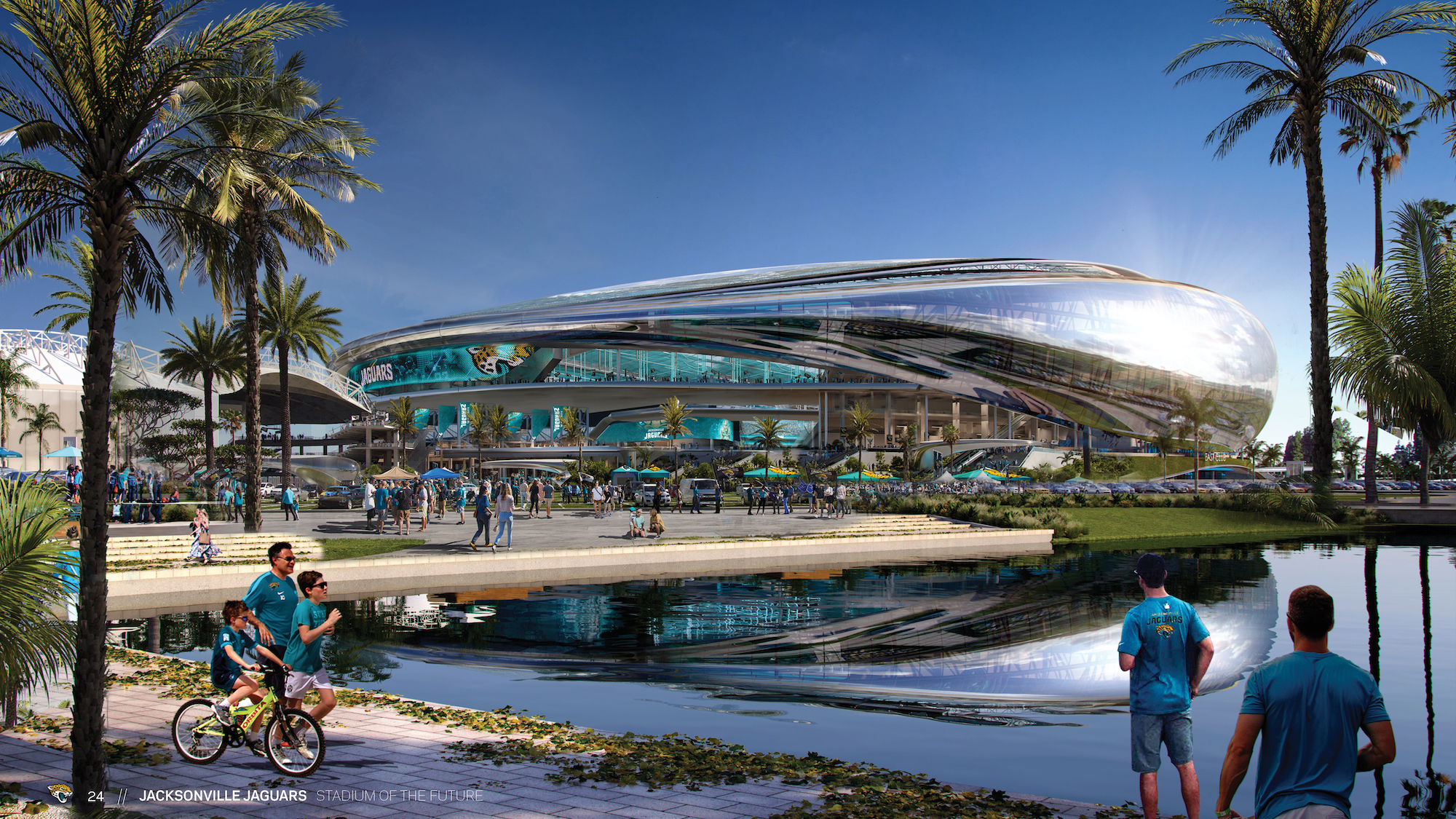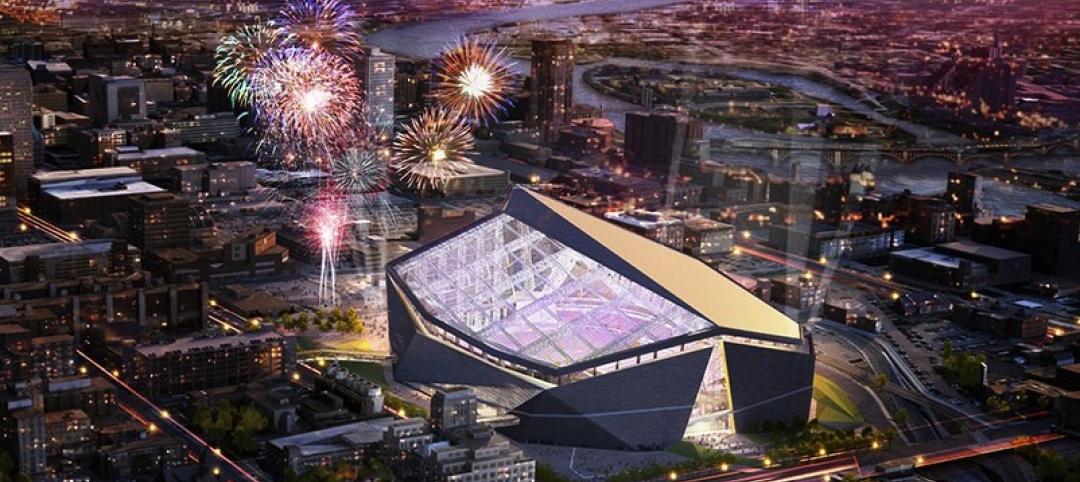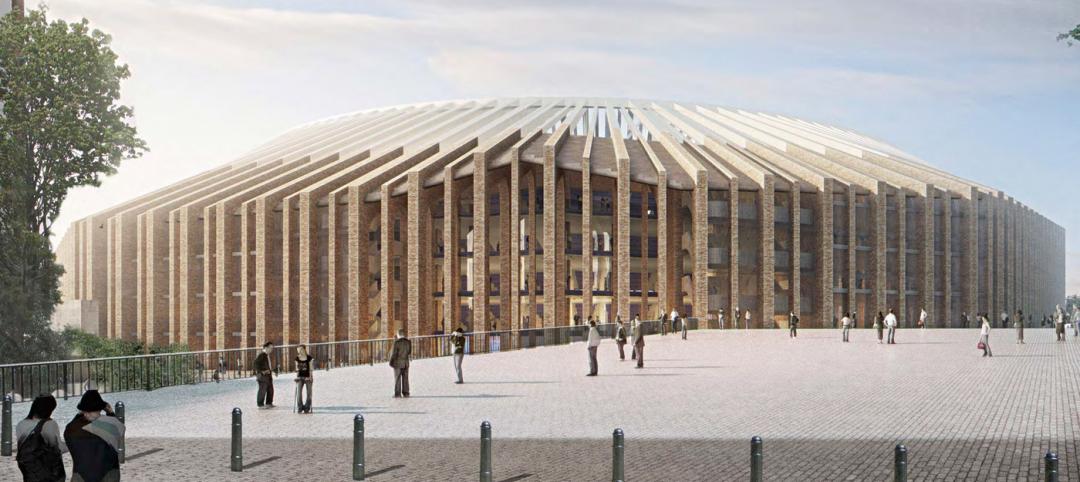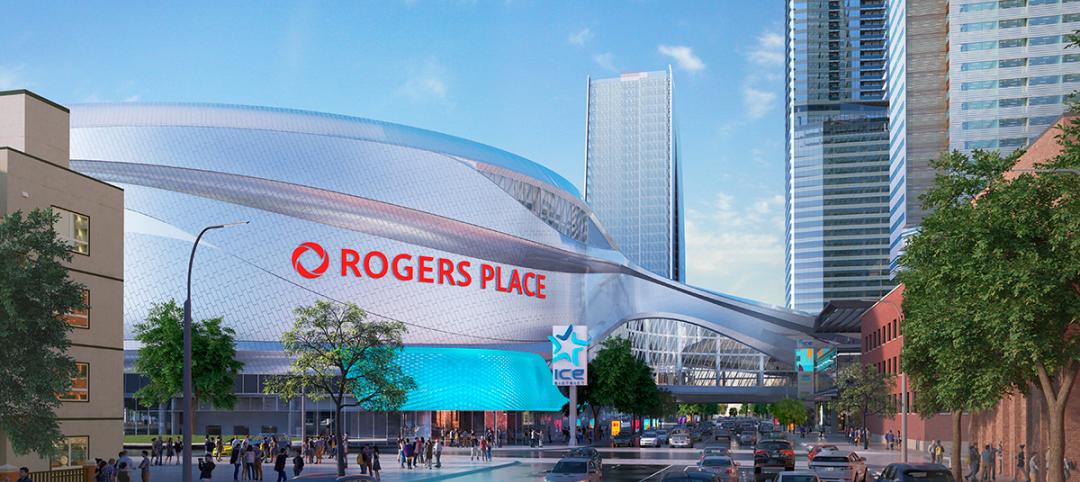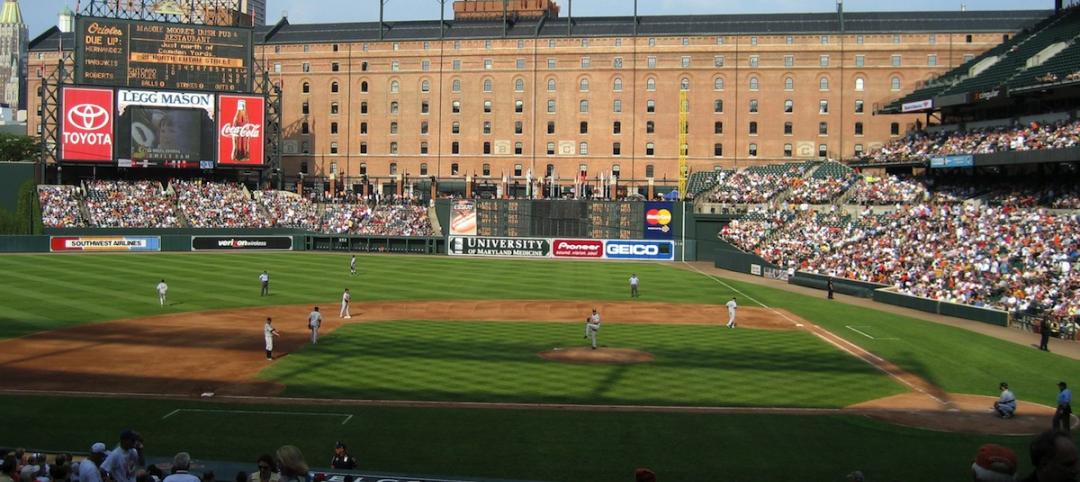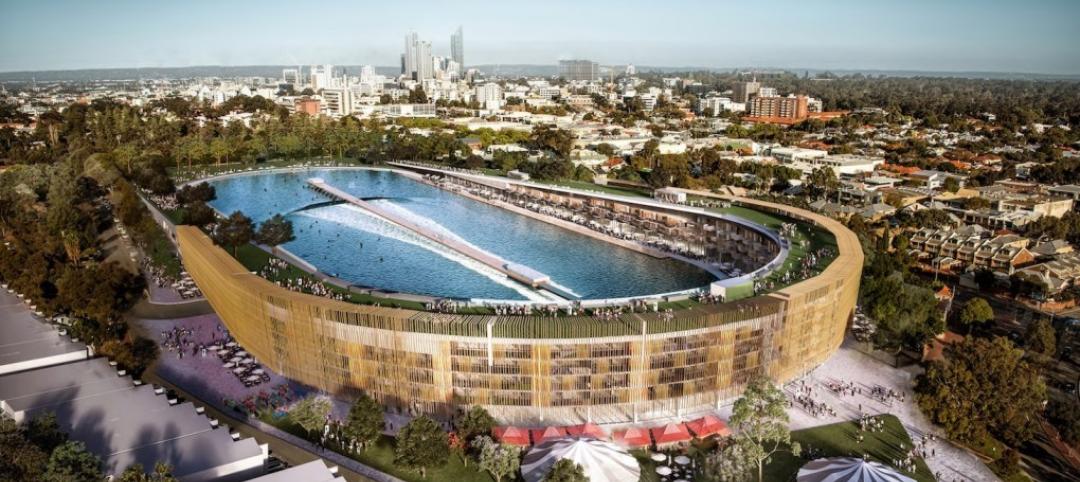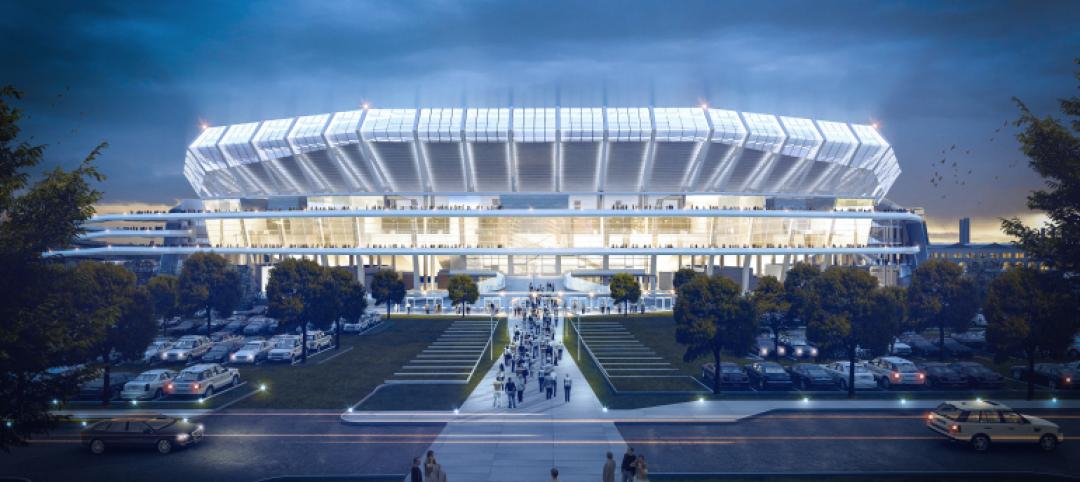In June, the Jacksonville Jaguars released the conceptual designs for the Stadium of the Future, a design project that began almost three years ago.
In July 2020, the Jaguars and the City of Jacksonville started working toward a long-term stadium solution with an engineering assessment of the current stadium, TIAA Bank Field. The assessment found the stadium’s challenges could be resolved by renovating the city-owned facility, rather than building a new venue.
Designed by HOK, the Stadium of the Future intends to meet the evolving needs of all stadium stakeholders—which include the Jaguars, the annual Florida-Georgia college football game, the TaxSlayer.com Gator Bowl, international sporting events, music festivals and tours, and the thousands of fans and guests who attend each event.
The design drew inspiration from Jacksonville’s landscapes—including biking and walking trails, parklands, greenways, beaches, and marshes. Guests will enter through a subtropical Floridian park that leads them to the main concourse.
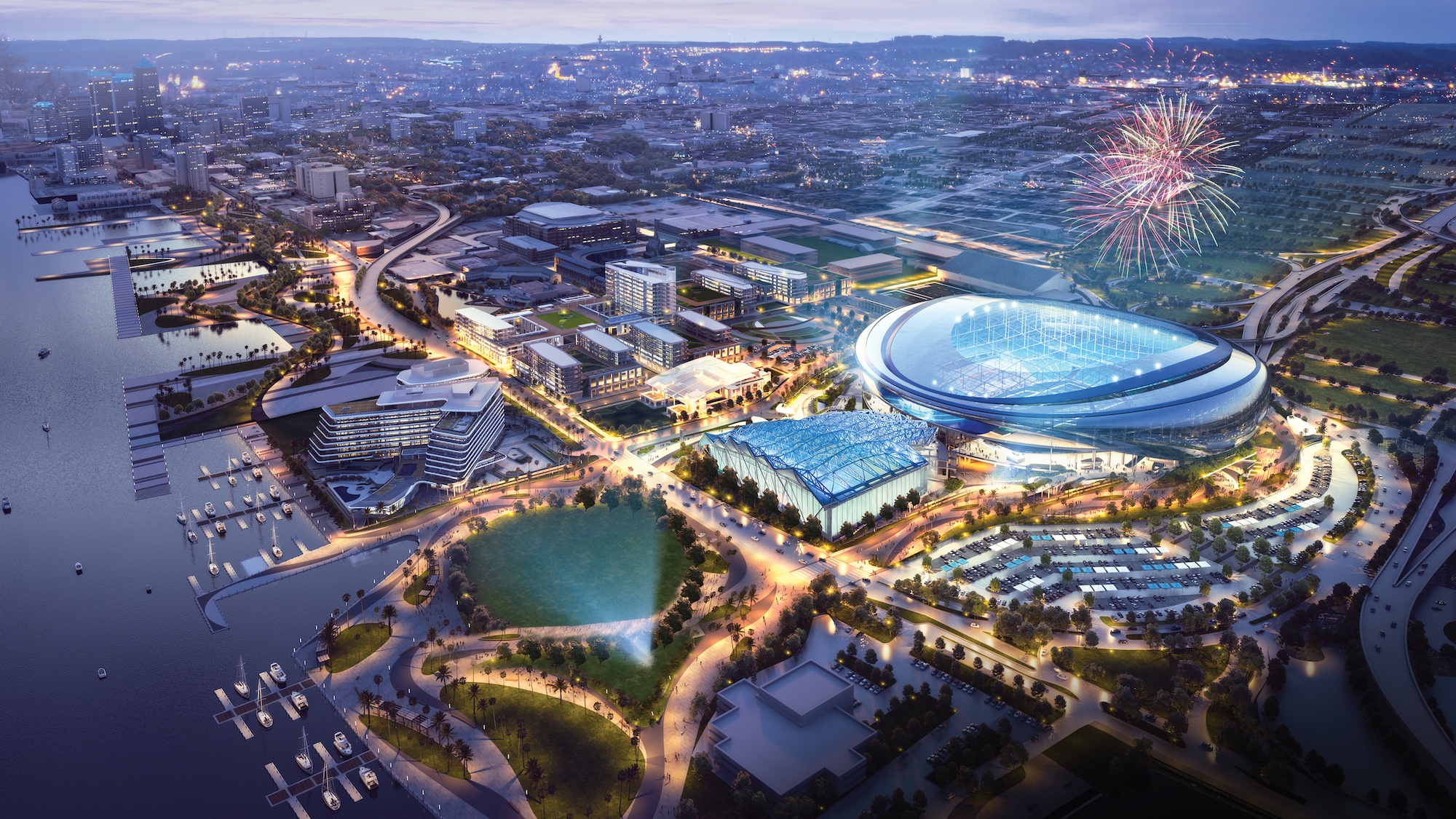
Thirty feet above ground, the concourse will offer views of Downtown Jacksonville and the St. Johns River. The 360-degree concourse, four times wider than before, will feature social bars and culinary options native to Jacksonville.
The flexible seating bowl will have a base capacity of 62,000 and will be able to hold up to 71,500 for a college football game and more for a concert. Lighting and digital technology will create distinctive experiences while keeping fans connected.
The design team has kept sustainability in mind. The mirrored, energy-efficient facade will reflect the area’s waterfront and vegetation. The open-air venue’s large shade canopy will reduce heat retention by more than 70 percent and lower temperatures 10 to 15 degrees, while protecting guests from the weather. Raised at the northern and southern ends to improve airflow, the façade will enable passive cooling throughout the stadium.
The stadium design also addresses some fan requests—including a 185% increase in the main concourse surface area, a 260% increase in the upper concourse surface area, 360-degree connectivity in the upper concourse, 13 new elevators, 32 new escalators, 220 new food and beverage points of sale, and 14 new restrooms.
On the Building Team:
Owners/developers: Jacksonville Jaguars, City of Jacksonville, and Iguana Investments
Owners’ representative: Impact Development Management
Design architect and architect of record: HOK
Preconstruction managers: AECOM Hunt and Barton Malow
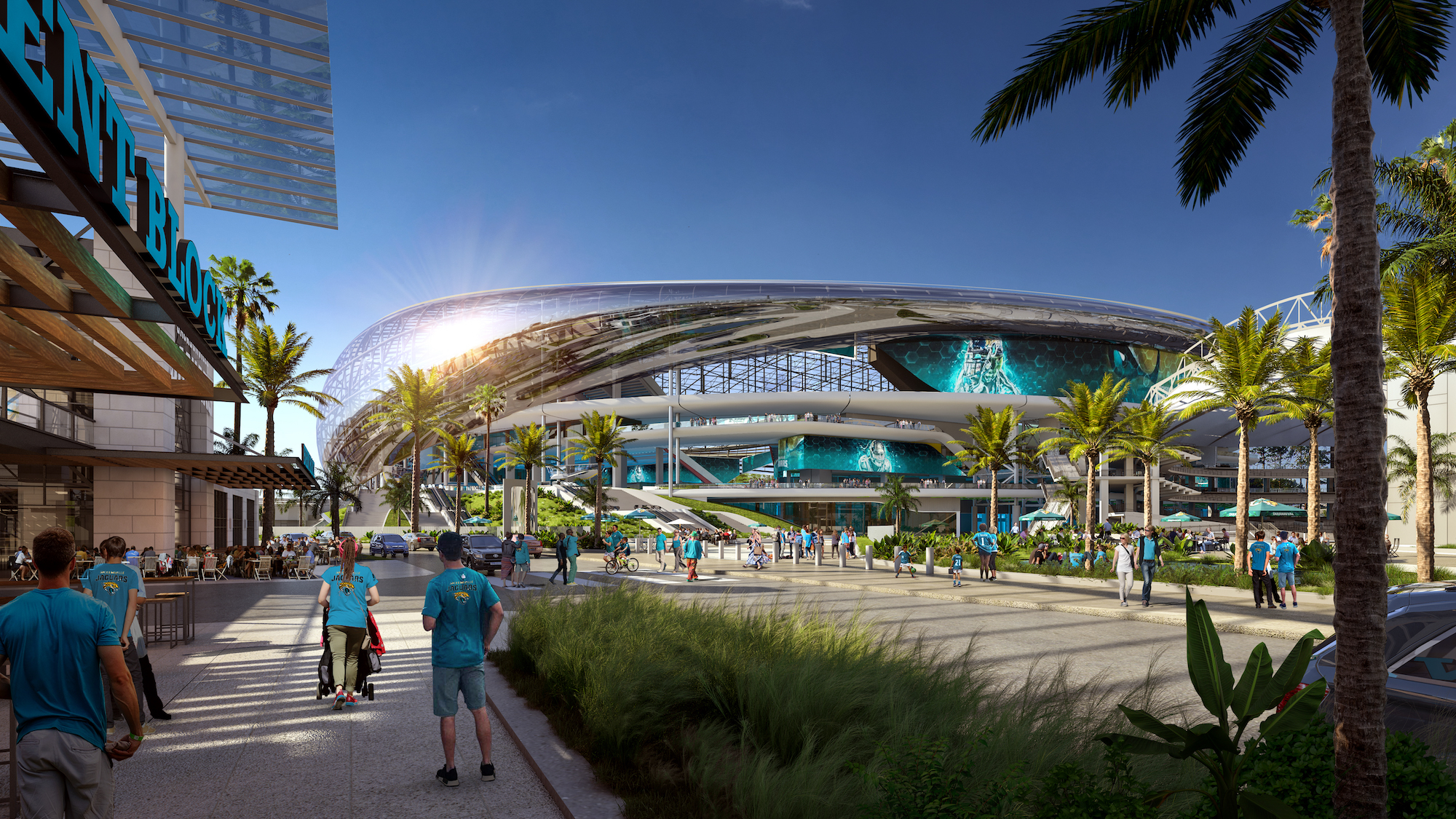
Here is the official statement from the Jacksonville Jaguars:
The Jacksonville Jaguars today introduced conceptual designs for the Stadium of the Future, a design project nearly three years in the making intended to inspire a transformation of Downtown Jacksonville and secure NFL football in Northeast Florida well into the future.
“We have reached the end of this important and initial phase of this project, the design of the stadium we envision will be the home of the Jacksonville Jaguars and serve our entire community for generations to come,” said Jaguars team owner Shad Khan. “From stadium discussions starting in 2016 to the formal process launched in July 2020 and now concluding, our objective has always been the same – lock in a promising future for the Jaguars and help our downtown become an economic engine to lift all of Jacksonville, particularly areas that have been underserved. Being able to share the video and stadium design highlights with the people of Jacksonville is a significant step forward in that effort.
“This is also all happening at a fantastic time for everyone. Jacksonville is red hot. Just check out all of the recent rankings -- best places to live, best housing market, hottest job market, best place to start a business, Jacksonville ranks within the top five in all of those lists. Add the fact the Jaguars are coming off a playoff season, and positioned for even better days ahead, and it all points to better and hopefully our best days just ahead in Jacksonville.”
The Jaguars and City of Jacksonville officials began work toward a long-term stadium solution in July 2020 with a thorough engineering assessment of the current stadium, TIAA Bank Field. The assessment concluded it was possible to solve stadium challenges via a renovation of the city-owned facility versus new construction.
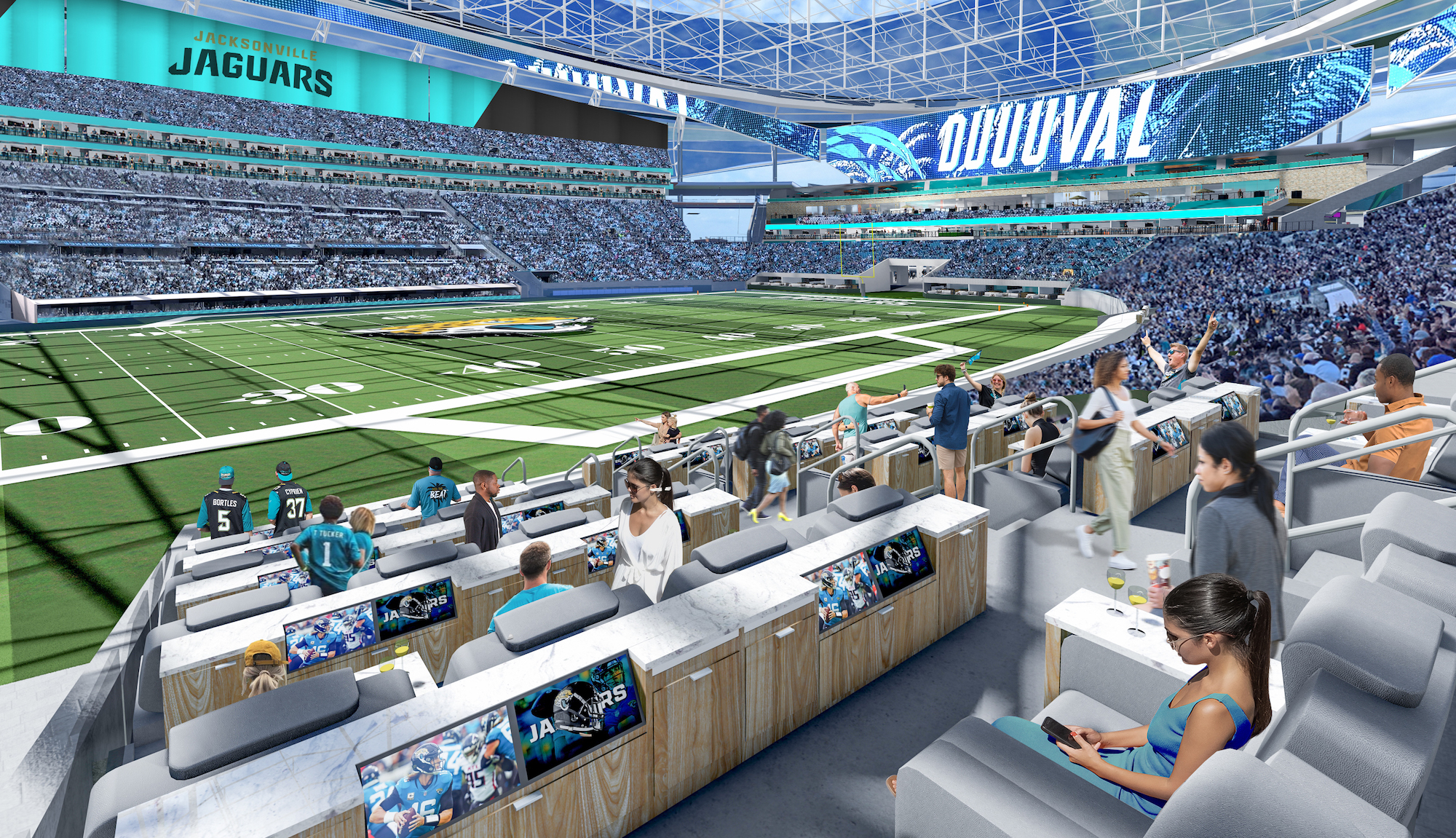
In-depth surveys of fans and other key stakeholders followed along with a comprehensive selection process for a design partner. After its selection as architect for the project team, HOK’s Sports + Recreation + Entertainment practice then collaborated with the Jaguars on turning concepts into more definitive renovation plans.
"This transformation transcends the stadium’s boundaries. The design creates an iconic, accessible community nexus that ties together the surrounding neighborhoods and riverfront," said Peter Broeder, HOK’s design principal. “The venue will celebrate Jacksonville’s natural landscape and climate, offering a park-like ambiance enriched by the latest amenities, engaging social spaces and state of the art technology. This unprecedented project will position Jacksonville as a premier destination for top-tier sports and entertainment events for decades to come."
In addition to HOK, the project team includes Impact Development and Management as the owner’s representative, with AECOM Hunt and Barton Malow serving in the role of preconstruction manager.
The Stadium of the Future design meets the evolving needs of all stadium stakeholders, which include the Jaguars, the annual Florida-Georgia college football game, the TaxSlayer.com Gator Bowl, international sporting events, major music festivals/tours and the thousands of fans and guests in attendance at each event.
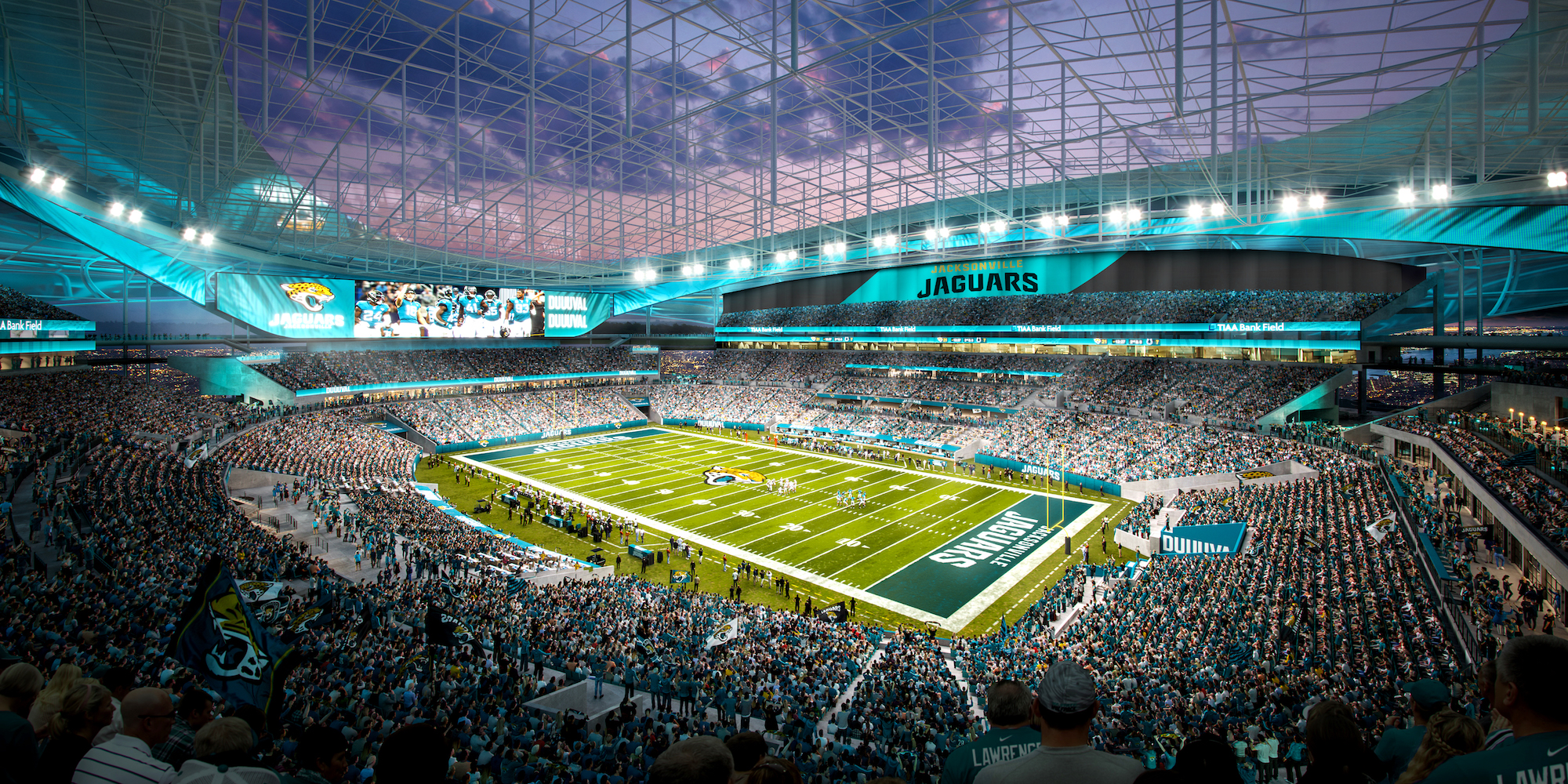
Design highlights include:
- Drawing inspiration from Jacksonville’s lush landscapes--a network of biking and walking trails, parklands, greenways, beaches and marshes—the striking design captures the essence of Florida. Fans will enter through a subtropical Floridian park, leading them to the main concourse. The concourse is elevated 30 feet above the ground, offering expansive views for Downtown Jacksonville and the St. Johns River.
- The 360-degree concourse, four times wider than before, will feature interactive social bars and a variety of unique experiences alongside culinary delights native to Jacksonville. Every fan will discover something unique during each visit to the venue, which offers a wide range of premium offerings and communal spaces.
- The seating bowl flexibility provides for a base capacity of 62,000 with expansion capabilities up to 71,500 for a college football game and more for a concert. The venue can transform its appearance through lighting and digital technology that will create distinctive game-day experiences while ensuring that fans stay connected.
- The stadium is designed with sustainability in mind. With a first-of-its-kind mirrored material, the energy-efficient facade reflects Jacksonville’s waterfront, vegetation and distinct spirit. The open-air venue features a large shade canopy that reduces heat retention by more than 70 percent, lowers temperatures 10 to 15 degrees and protect fans from the weather. The façade is raised at the northern and southern ends to optimize airflow, enabling passive cooling throughout the stadium.
- The stadium will feature lookout decks that offer citywide views. A fritted roof membrane introduces dispersed ambient light throughout the stadium interior.
- The new stadium design addresses key fan requests, including a 185-percent increase in main concourse surface area, a 260-percent increase in upper concourse surface area, 360-degree connectivity in the upper concourse, 13 new elevators and 32 new escalators to support vertical movement, 220 new food and beverage points of sale and 14 new restrooms.
- Construction will generate thousands of jobs and, once complete, the stadium will become a source of immense civic pride and a coveted destination for residents and visitors alike to Jacksonville, which was rated by Lending Tree earlier this year as No. 5 among America’s Biggest Boomtowns – and No. 1 among NFL markets.
“We fully anticipate a reimagined sports complex with the renovated stadium as its centerpiece will spark development in the east end of Downtown Jacksonville similar to the renaissance of the Brooklyn neighborhood to the west,” Jaguars President Mark Lamping said. “Combining the power of development to both the west and east of Downtown Jacksonville should create even more momentum in our downtown core, which is already set to benefit from The Shipyards project currently underway.
“Just as important, this project will provide a development boost to existing neighborhoods around the sports complex, such as the OUTEAST neighborhood. Our goal is simple -- maximize every ounce of positive impact made possible by this project so all Jacksonville residents may benefit.”
Over the next two weeks, the Jaguars will play host to a series of Huddle Up Jax events where residents and fans can learn more about the Stadium of the Future designs. Lamping will be on site at the community huddles, which will be strategically located around town to ensure access for all of Duval County.



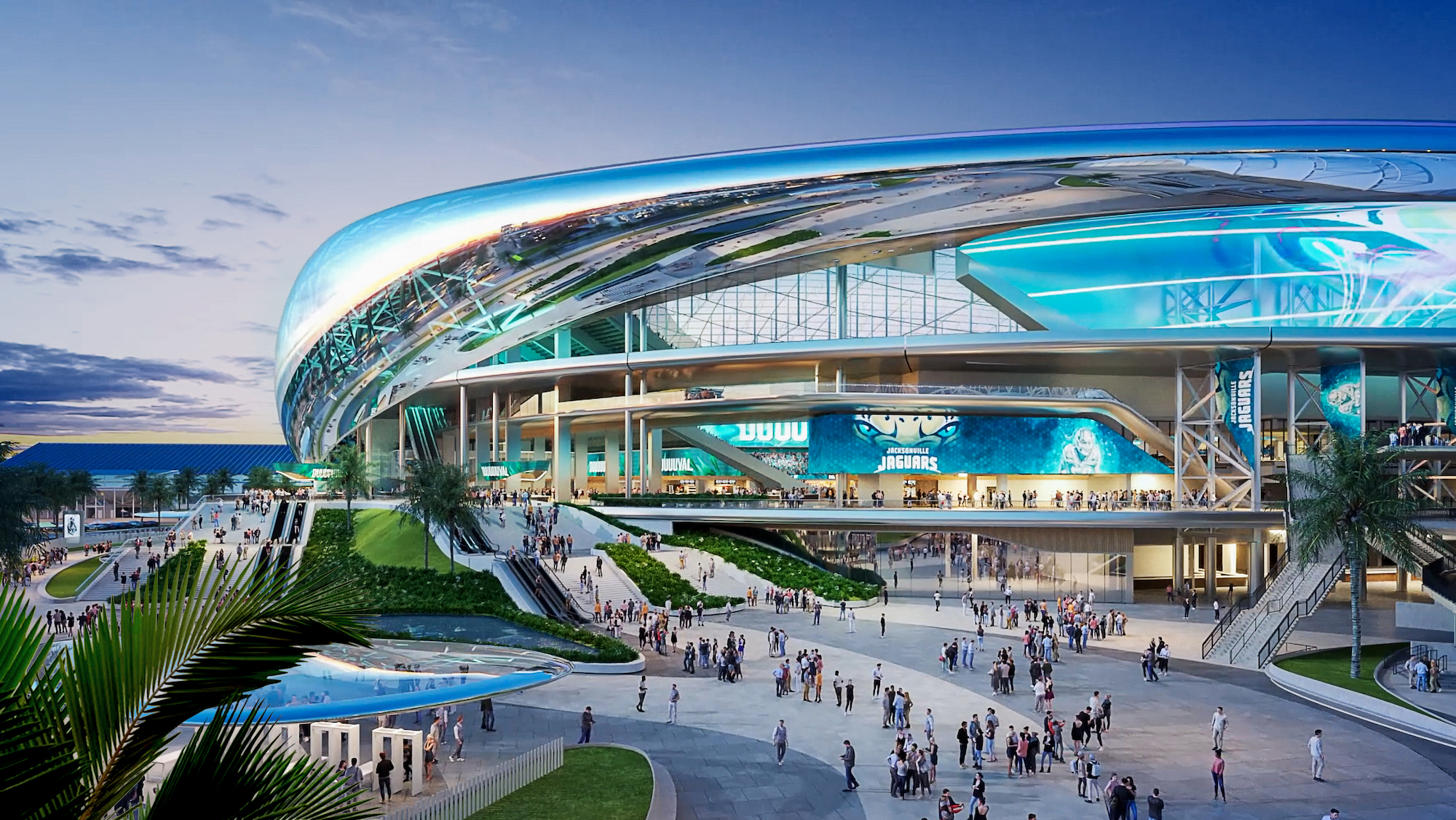

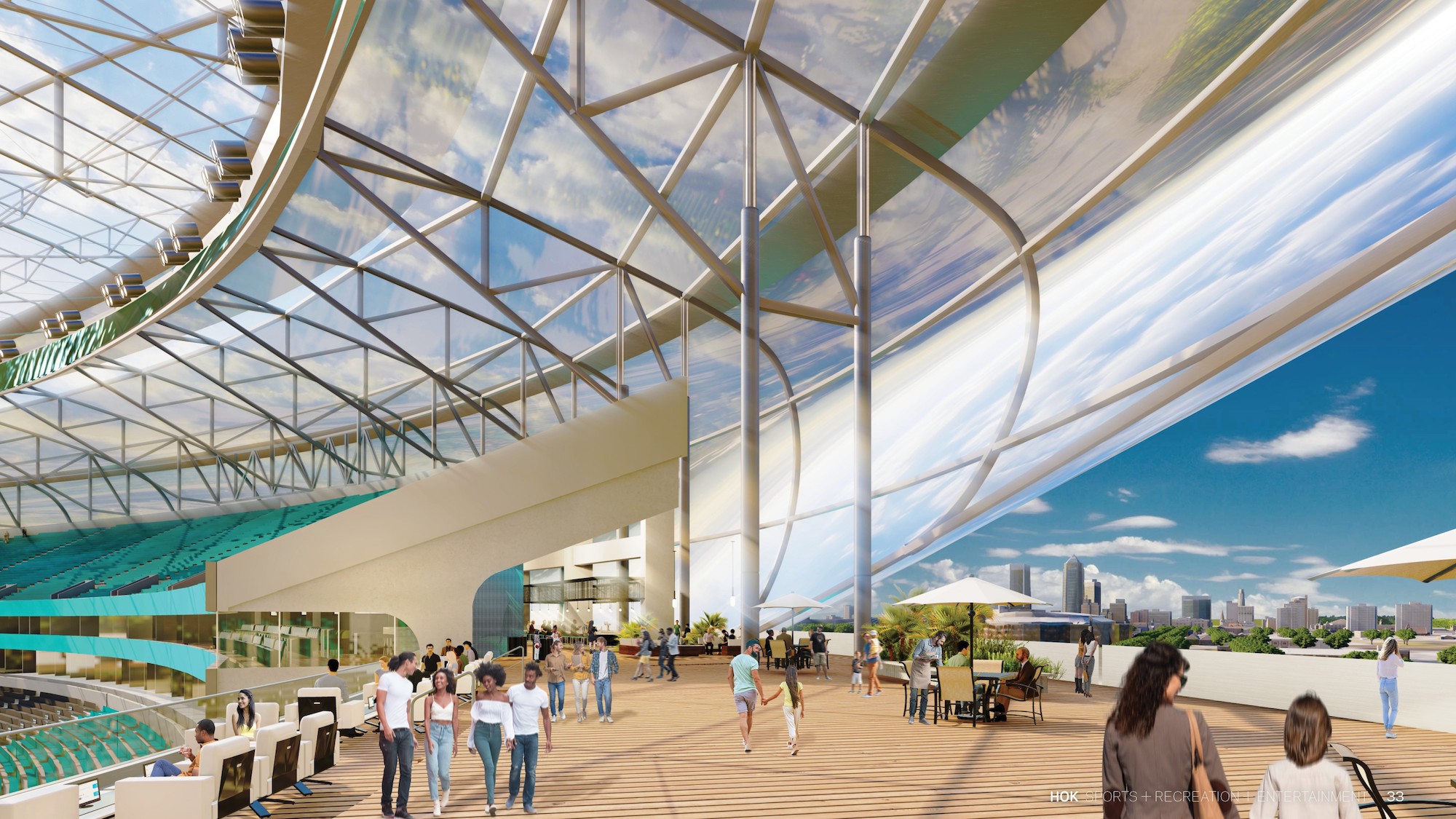
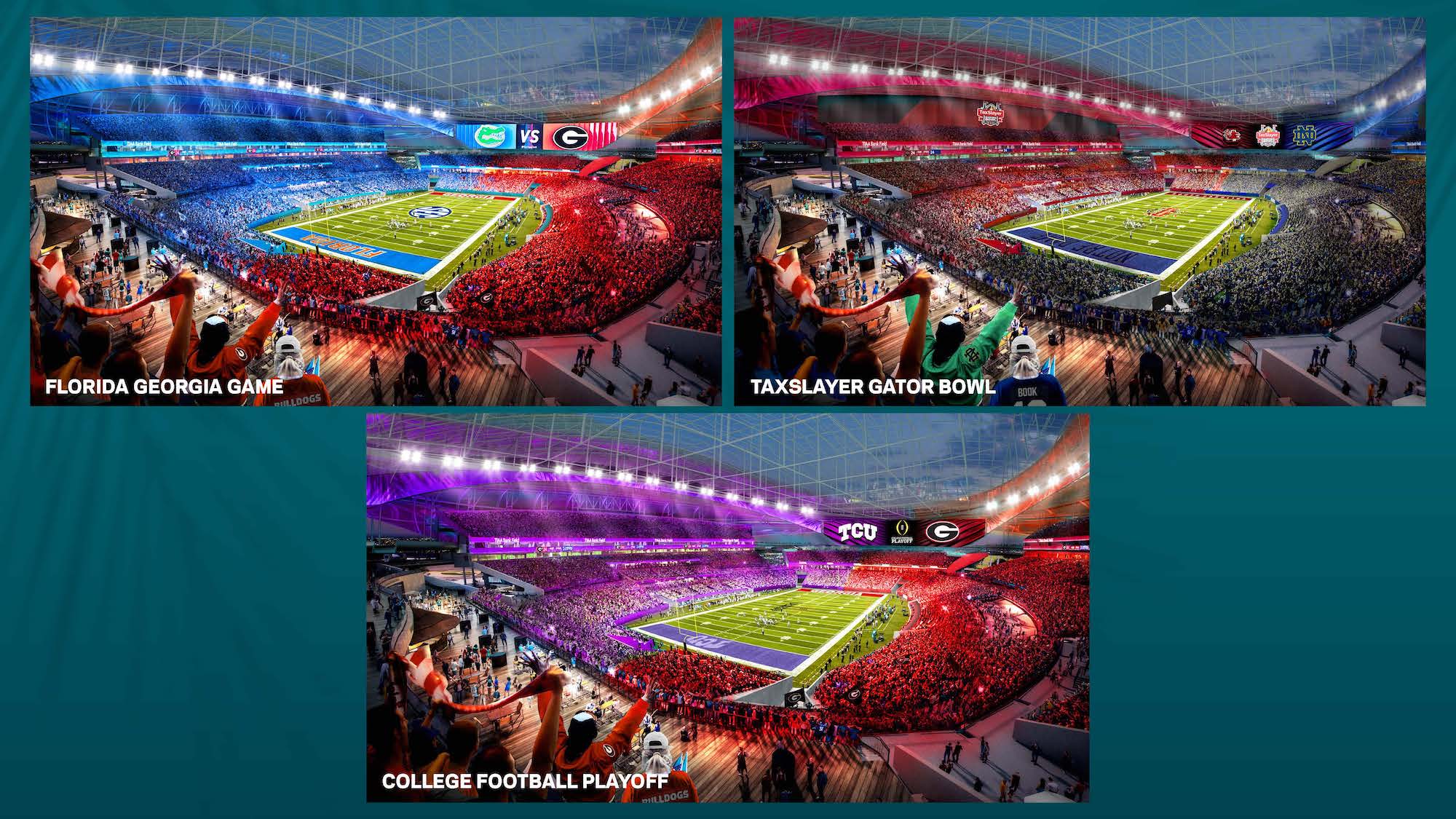
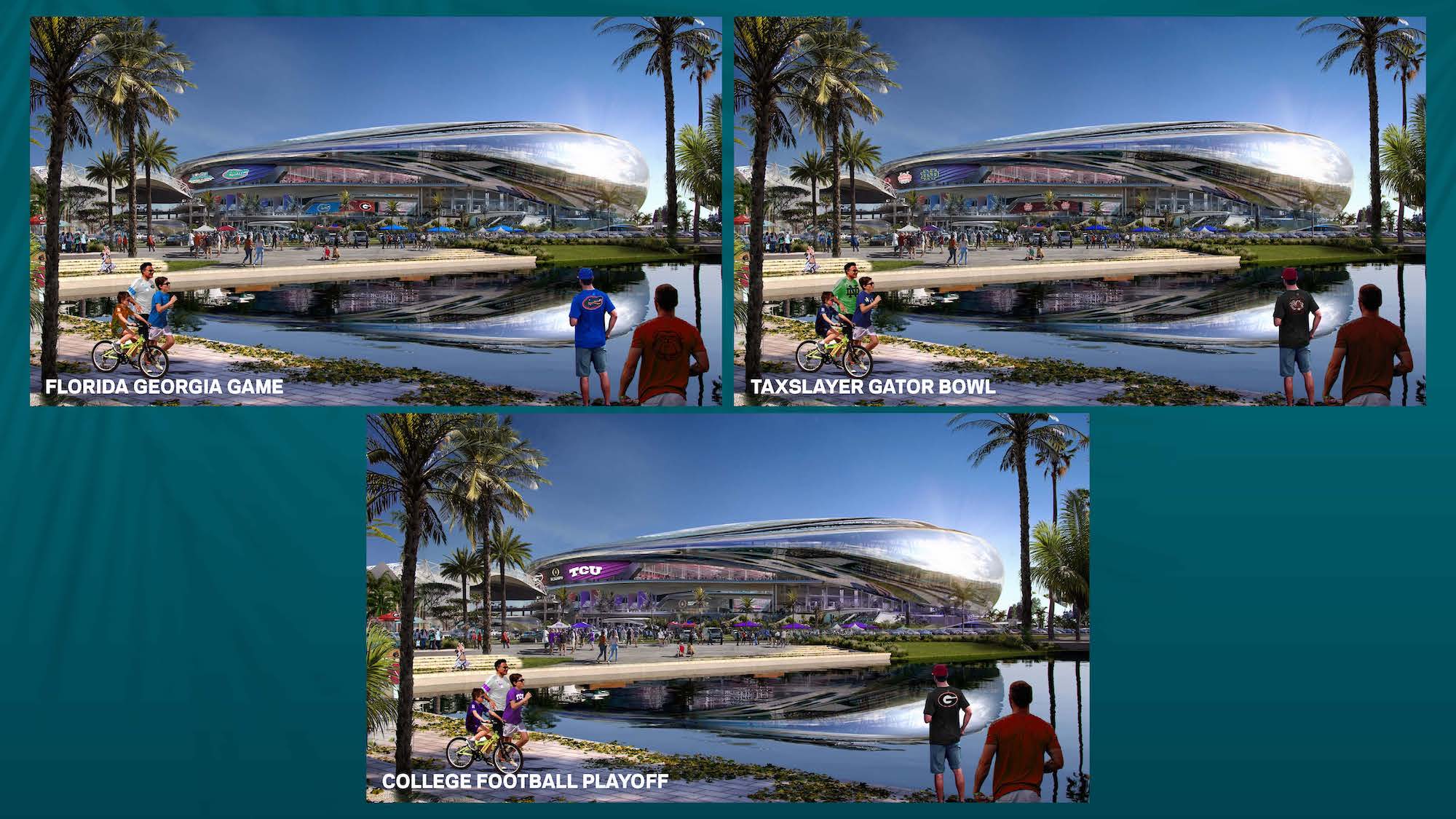
Related Stories
Sports and Recreational Facilities | Dec 7, 2015
High tech material makes Minnesota Vikings' new stadium's roof light and strong
U.S. Bank Stadium will have an ETFE (ethylene tetrafluoroethylene) pneumatic roof, a durable, flexible material made of a polymer similar to Teflon.
Sports and Recreational Facilities | Dec 3, 2015
Herzog & de Meuron unveils renderings of redeveloped stadium for Chelsea FC
As many as 264 brick piers will line the perimeter of the stadium and extend to a steel ring perched above the field.
Sports and Recreational Facilities | Nov 16, 2015
Edmonton's Rogers Place among North America's 'next-gen' stadiums
The home of the NHL’s Edmonton Oilers made Curbed’s list of 11 next-generation stadiums in North America. Also on the list are new venues for the NFL’s Atlanta Falcons and the NBA’s Milwaukee Bucks.
Sports and Recreational Facilities | Nov 13, 2015
It’s time to make MLB stadiums safer
Major League Baseball doesn't have official stadium design guidelines. Skanska's Tom Tingle has three ways the league can make the game safer for fans while still preserving its integrity.
Office Buildings | Nov 6, 2015
Real Madrid to get new headquarters designed by Rafael de La-Hoz
The design of the building is made of a set of two parallelepiped-shaped volumes.
Sports and Recreational Facilities | Nov 2, 2015
MJA Studio proposes converting Australian stadium into giant surf pool
The Subiaco Oval, which was built in 1908, could become the Subi Surf Park, a complex with apartments, stores, and a 300-meter-long wave pool.
Sports and Recreational Facilities | Sep 25, 2015
Italian soccer stadium designed to look like translucent waves
Architect Massimo Guidotti created a sinuous design for the stadium, which can support up to 16,000 seats.
Sports and Recreational Facilities | Sep 21, 2015
Tokyo Olympic Stadium saga ends for Zaha Hadid
After resubmitting a bid, the firm will not design the main venue for the 2020 Olympics after all.
Sports and Recreational Facilities | Sep 2, 2015
Proposed stadium for NFL's St. Louis Rams offers more than just football
The stadium's newest features have been unveiled by HOK, which could give the Rams one of the most inventive homes in the league—if it gets built.
Sports and Recreational Facilities | Aug 24, 2015
Green Bay Packers to start construction on a business district near Lambeau Field this fall
Flush with cash, the NFL team is kicking in about half of the $130 million for the 20-acre project’s first phase.


